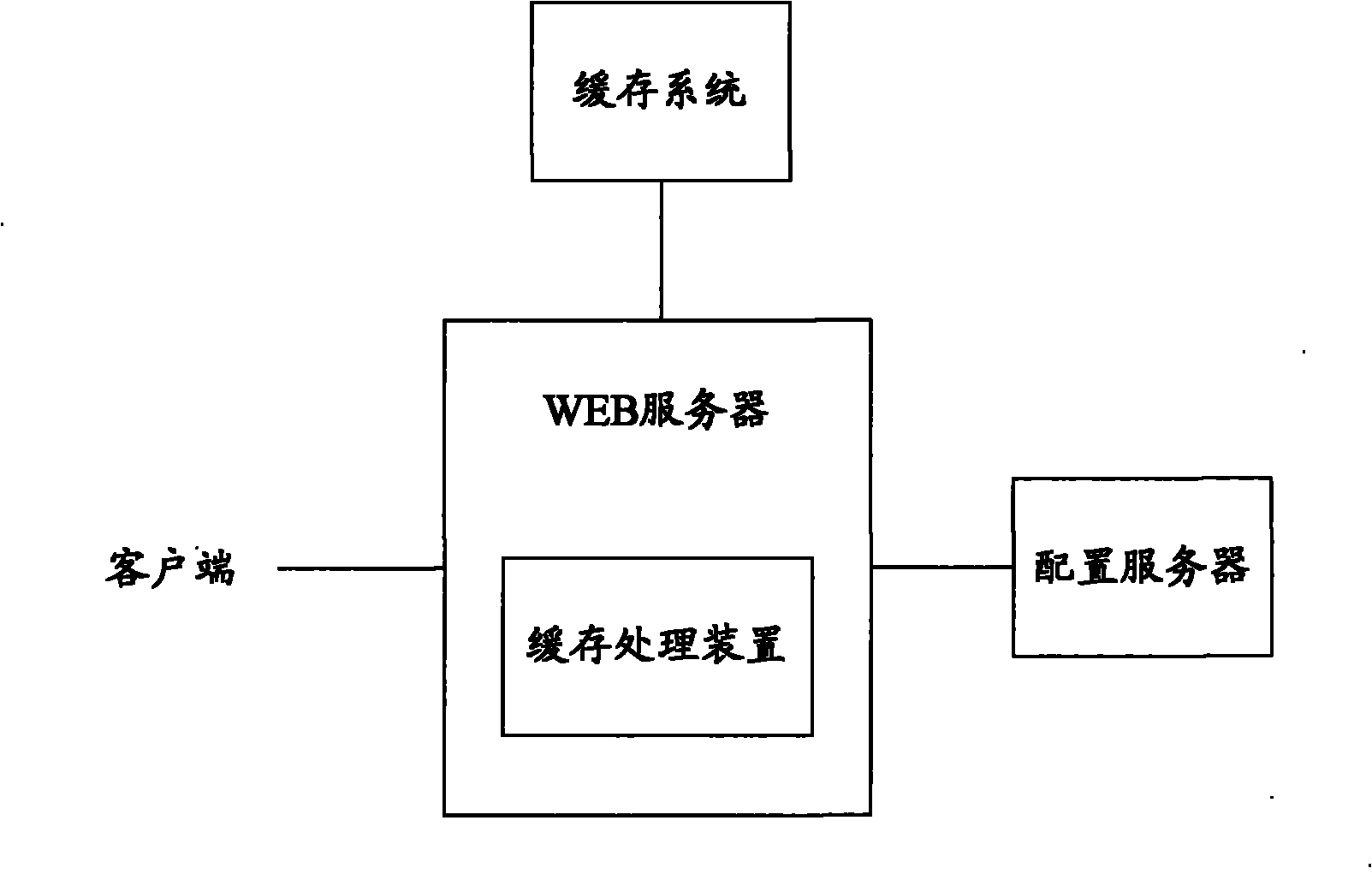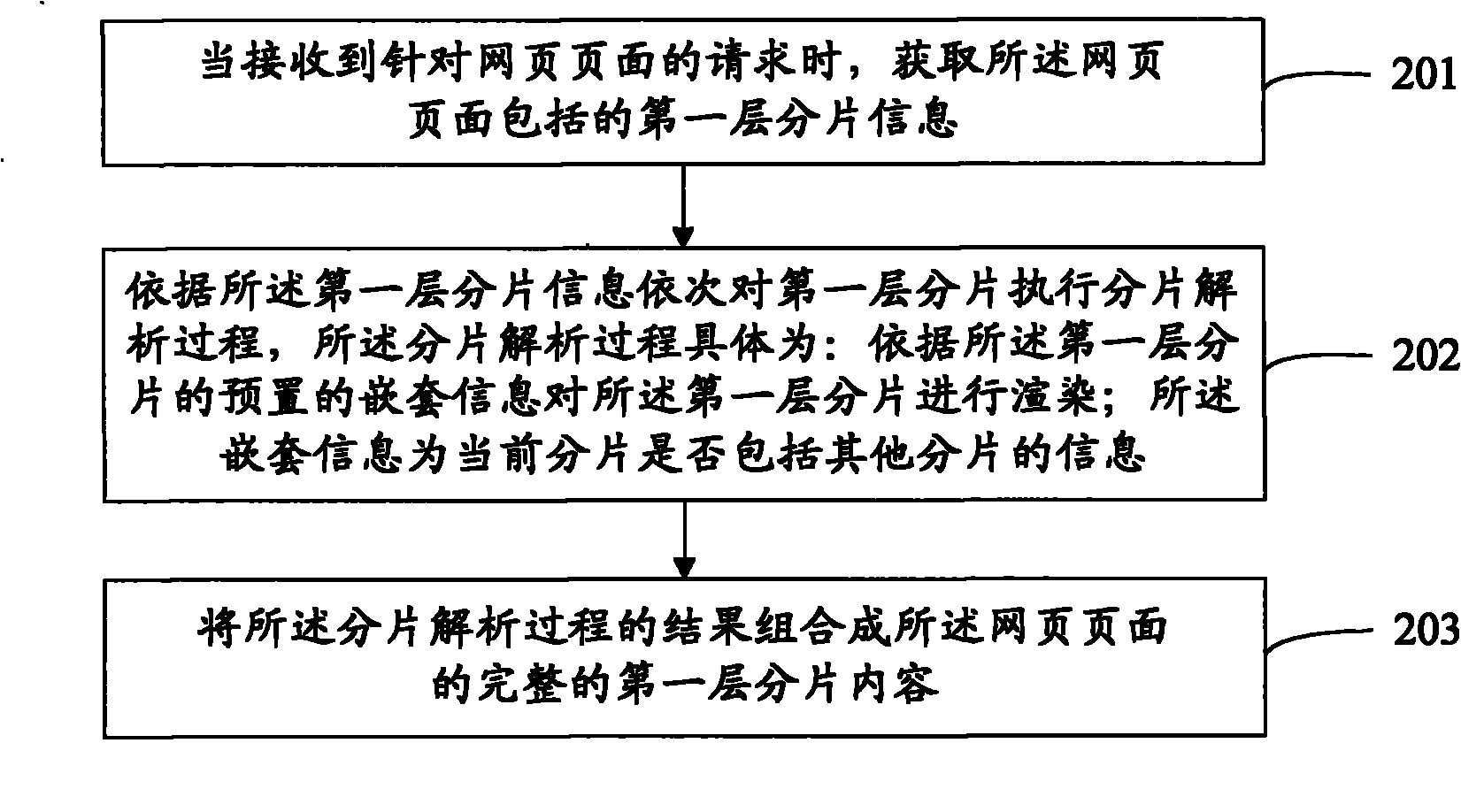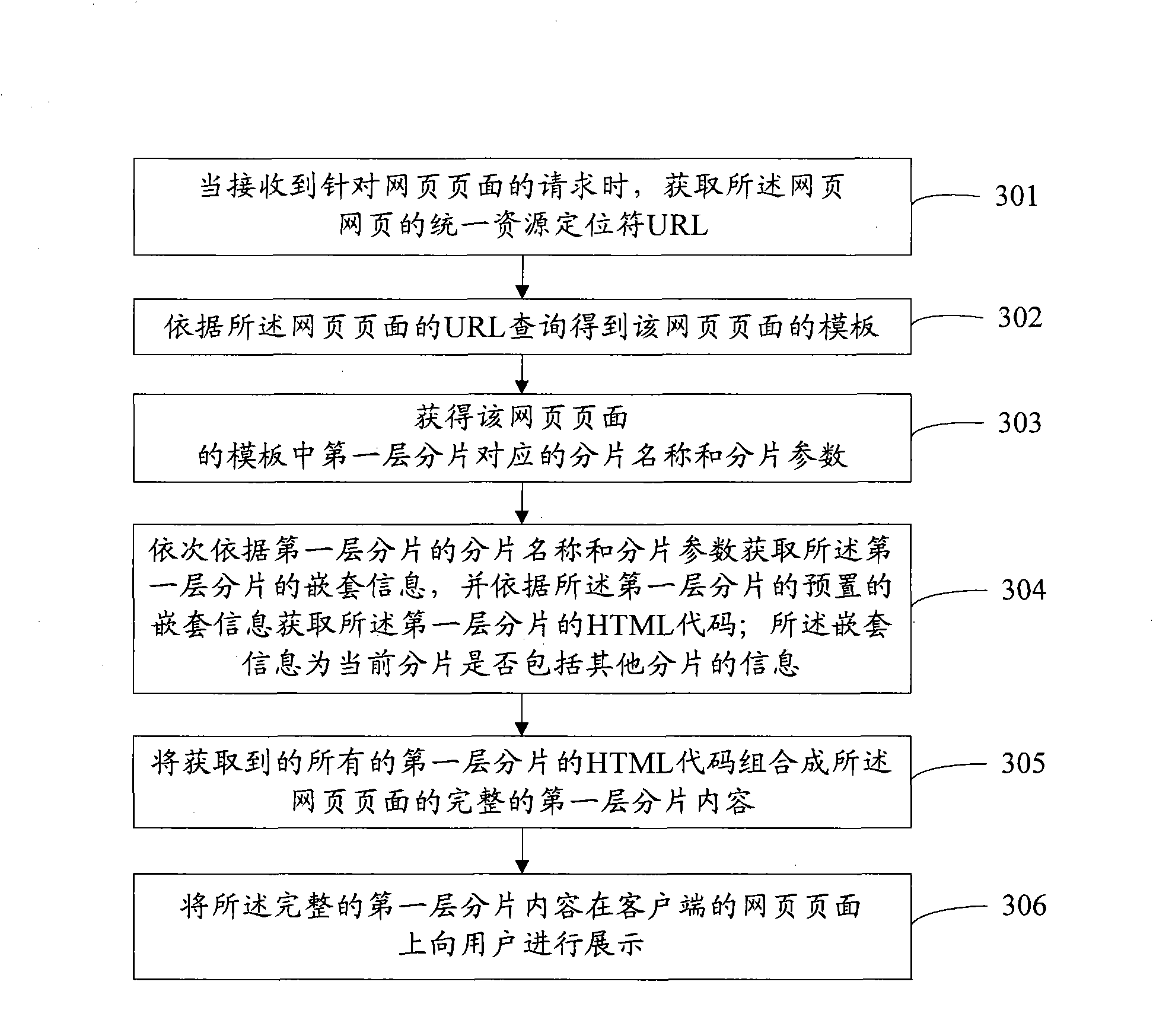Method and device for fragment nested caching of webpage
A web page and processing method technology, which is applied in the fields of electronic digital data processing, special data processing applications, natural language data processing, etc., can solve the problem of inability to realize subsequent recursive processing of fragmented nested cache and so on.
- Summary
- Abstract
- Description
- Claims
- Application Information
AI Technical Summary
Problems solved by technology
Method used
Image
Examples
Embodiment 1
[0053] figure 2 A flow chart showing Embodiment 1 of a page cache processing method of the present application may include the following steps:
[0054] Step 201: When a request for a web page is received, obtain first-level fragment information included in the web page.
[0055] In this embodiment, if the webpage is determined, the first layer of fragmentation information included in the webpage can also be determined, because the fragmentation format of the same webpage is the same, that is, which webpage needs to be divided into Shards, information such as the location and name of these shards. Among them, each fragment is essentially a placeholder on the web page, and this placeholder can be used on any other web page, and the placeholder will be replaced only when the result of the fragment is finally rendered The specific content of the component slice. Generally, the specific content of the segment refers to the HyperText Mark-up Language (HTML) code corresponding t...
Embodiment 2
[0063] image 3 A flow chart showing Embodiment 2 of a page cache processing method of the present application may include the following steps:
[0064] Step 301: When a request for a web page is received, obtain a uniform resource locator (URL) of the web page.
[0065] In this step, when a web page request is received, a Uniform / Universal Resource Locator (Uniform / Universal Resource Locator, URL) corresponding to the web page is first obtained. Taking the "Baby Details" page in an online trading platform as an example, suppose the URL address of the "Baby Details" page is: xxx.xxx.com / detail.html? id=123.
[0066] Step 302: Query according to the URL of the web page to obtain the template of the web page.
[0067] Because each webpage has a unique URL, and each webpage also has a template, so the template adopted by the webpage can be known according to the URL of the webpage. Assuming that the template information of the "Baby Details" page is "detail.vm", in this step,...
Embodiment 3
[0103] refer to Figure 6 , shows a flow chart of Embodiment 3 of a page cache processing method of the present application. This embodiment can be understood as a specific example of applying the page cache processing method of the present application to practice, and may include the following steps:
[0104] Step 601: When a request for a web page is received, obtain first-level fragmentation information included in the web page.
[0105] Step 602: Query the cache information of the first layer fragment from the configuration server, the cache information includes whether the fragment needs to be cached, and the cache time length information of the fragment that needs to be cached.
[0106]Step 603: Determine whether the first-level fragment needs to be cached according to the cache information of the first-level fragment, and if yes, proceed to step 604; if not, proceed to step 605.
[0107] Step 604: Perform a hash operation on the slice name and slice parameters of the f...
PUM
 Login to View More
Login to View More Abstract
Description
Claims
Application Information
 Login to View More
Login to View More - R&D
- Intellectual Property
- Life Sciences
- Materials
- Tech Scout
- Unparalleled Data Quality
- Higher Quality Content
- 60% Fewer Hallucinations
Browse by: Latest US Patents, China's latest patents, Technical Efficacy Thesaurus, Application Domain, Technology Topic, Popular Technical Reports.
© 2025 PatSnap. All rights reserved.Legal|Privacy policy|Modern Slavery Act Transparency Statement|Sitemap|About US| Contact US: help@patsnap.com



